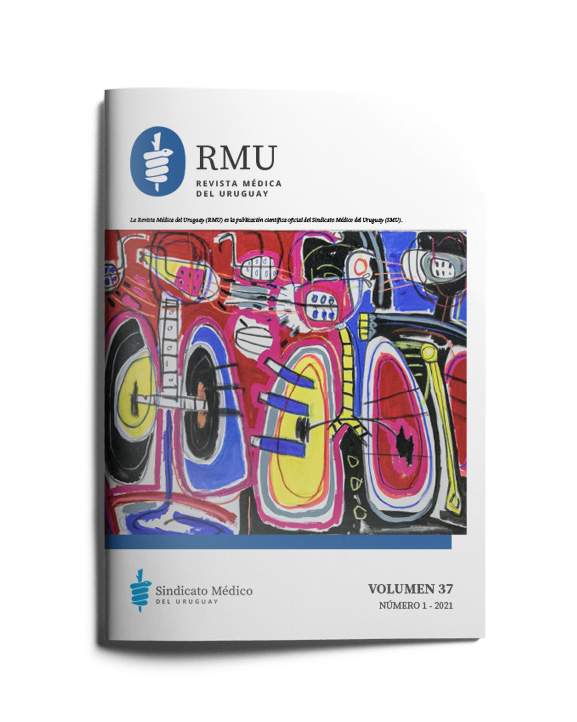Consideraciones bioéticas en relación con el uso de la inteligencia artificial en mastología
Resumen
El screening mamográfico ha ayudado a identificar el cáncer de mama en sus estadíos más tempranos, cuando los tratamientos son más efectivos. El empleo de la inteligencia artificial (IA) en el análisis de los mamogramas ha demostrado ser capaz de superar la habilidad del ojo humano para detectar lesiones en la mama sospechosas de cáncer. El objetivo del presente trabajo es realizar un aporte reflexivo sobre el avance de la tecnología digital y en particular de la IA en los screening mamográficos, desde el punto de vista técnico y bioético. Se analizan ventajas y limitaciones de la IA, explicando cómo se produce el aprendizaje de los sistemas computacionales. Se propone un debate bioético sobre cuestiones tales como la privacidad, la credibilidad, la responsabilidad y la educación permanente. Se resalta la importancia de establecer canales de diálogo entre todas las partes involucradas en la incorporación de las nuevas tecnologías en medicina.
Citas
2) Kyono T, Gilbert F, van der Schaar M. Improving workflow efficiency for mammography using machine learning. J Am Coll Radiol 2020; 17(1 Pt A):56-63.
3) Geras KJ, Mann RM, Moy L. Artificial intelligence for mammography and digital breast tomosynthesis: current concepts and future perspectives. Radiology 2019; 293(2):246-59. doi: 10.1148/radiol.2019182627.
4) Paci E, Broeders M, Hofvind S, Puliti D, Duffy S. European breast cancer service screening outcomes: a first balance sheet of the benefits and harms. Cancer Epidemiol Biomarkers Prev 2014; 23(7):1159-63.
5) Tabár L, Vitak B, Chen T, Yen A, Cohen A, Tot T, et al. Swedish two-county trial: impact of mammographic screening on breast cancer mortality during 3 decades. Radiology 2011; 260(3):658-63.
6) Lehman C, Arao R, Sprague B, Lee J, Buist D, Kerlikowske K, et al. National performance benchmarks for modern screening digital mammography: update from the Breast Cancer Surveillance Consortium. Radiology 2017; 283(1):49-58. doi: 10.1148/radiol.2016161174.
7) McKinney S, Sieniek M, Godbole V, Godwin J, Antropova N, Ashrafian H, et al. International evaluation of an AI system for breast cancer screening. Nature 2020; 577(7788):89-94. doi: 10.1038/s41586-019-1799-6.
8) Copeland B. Artificial intelligence. En: Encyclopedia Britannica. London: Encyclopedia Britannica, 2021. Disponible en: www.britannica.com/technology/artificial-intelligence [Consulta: 4 marzo 2021].
9) McCarthy J. What is artificial intelligence? 2007. Disponible en: http://jmc.stanford.edu/articles/whatisai/whatisai.pdf [Consulta: 12 abril 2021].
10) Guinovart X. Fundamentos de Lingüística Computacional: bases teóricas, líneas de investigación y aplicaciones. Bibliodoc: anuari de biblioteconomia, documentació i informació 1998; 135-46. Disponible en: http://www.raco.cat/index.php/Bibliodoc/article/view/56629/66051 [Consulta: 16 febrero 2021].
11) Schmidhuber J. Deep learning in neural networks: an overview. Neural Netw 2015; 61:85-117.
12) Alpaydin E. Introduction to machine learning. 3rd ed. The MIT Press, 2014.
13) Uruguay. UdelaR. Facultad de Ingeniería. Aprendizaje automático aplicado al análisis de textos. Disponible en: https://www.fing.edu.uy/cpap/cursos/aprendizaje-automatico-aplicado-al-analisis-de-textos [Consulta: 4 marzo 2021].
14) Datta S; MIT Auto-ID Labs; Massachusetts Institute of Technology. Emergence of Digital Twins. 2016. Disponible en: https://dspace.mit.edu/handle/1721.1/104429 [Consulta: 4 marzo 2021].
15) Deng L, Yu D. Deep learning: methods and applications. Found Trends Signal Process 2013; 7(3-4):197-387.
16) Food and Drug Administration. Digital health. Silver Spring, MD: FDA, 2021. Disponible en: https://www.fda.gov/medical-devices/digital-health-center-excellence#mobileapp [Consulta: 4 marzo 2021].
17) Grzybowski A, Brona P, Lim G, Ruamviboonsuk P, Tan GSW, Abramoff M, et al. Artificial intelligence for diabetic retinopathy screening: a review. Eye (Lond) 2020; 34:451-60.
18) Tabár L, Fagerberg C, Gad A, Baldetorp L, Holmberg L, Gröntoft O, et al. Reduction in mortality from breast cancer after mass screening with mammography. Randomised trial from the Breast Cancer Screening Working Group of the Swedish National Board of Health and Welfare. Lancet 1985; 1(8433):829-32.
19) Sechopoulos I, Teuwen J, Mann R. Artificial intelligence for breast cancer detection in mammography and digital breast tomosynthesis: state of the art. Semin Cancer Biol 2021; 72:214-25. doi: 10.1016/j.semcancer.2020.06.002.
20) Abbasi J. Artificial intelligence improves breast cancer screening in study. JAMA 2020; 323(6):499. doi: 10.1001/jama.2020.0370.
21) Mendelson E. Artificial intelligence in breast imaging: potentials and limitations. AJR Am J Roentgenol 2019; 212(2):293-9.
22) Thrall JH, Li X, Li Q, Cruz C, Do S, Dreyer K, et al. Artificial intelligence and machine learning in radiology: opportunities, challenges, pitfalls, and criteria for success. J American Coll Radiol 2018; 15(3 Pt B):504-8. doi: 10.1016/j.jacr.2017.12.026.
23) European Group on Ethics in Science and New Technologies. Statement of artificial intelligence, robotics and “autonomous” systems. Brussels, 2018. doi: 10.2777/786515.
24) Vayena E, Haeusermann T, Adjekum A, Blasimme A. Digital health: meeting ethical and policy challenges. En: Stuckelberger C, Duggal P, eds. Cyber Ethics 4.0: Serving Humanity with values. Geneva: Stuckelberger-Duggal, 2018:229-58.
25) Chartrand G, Cheng PM, Vorontsov E, Drozdzal M, Turcotte S, Pal CJ, et al. Deep learning: a primer for radiologists. Radiographics 2017; 37(7):2113-31. doi: 10.1148/rg.2017170077.
26) Chockley K, Emanuel E. The end of radiology? Three threats to the future practice of radiology. J Am Coll Radiol 2016; 13(12 Pt A):1415-20. doi: 10.1016/j.jacr.2016.07.010.
27) Nabi J. How bioethics can shape artificial intelligence and machine learning? J Hastings Cent Rep 2018; 48(5):10-13. doi: 10.1002/hast.895.
28) Elenko E, Speier A, Zohar D. A regulatory framework emerges for digital medicine. Nat Biotechnol 2015; 33(7):697-702.
29) Rigby M. Ethical dimensions of using artificial intelligence in health care. AMA J Ethics 2019; 21(2):E121-4. doi: 10.1001/amajethics.2019.121.
30) Schaffter T, Buist D, Lee C, Nikulin Y, Ribli D, Guan Y, et al. Evaluation of combined artificial intelligence and radiologist assessment to interpret screening mammograms. JAMA Netw Open 2020; 3(3):e200265. doi: 10.1001/jamanetworkopen.2020.0265.
31) Abdala MB, Lacroix Eussler S, Soubie S. La política de la Inteligencia Artificial: sus usos en el sector público y sus implicancias regulatorias. (Documento de Trabajo N°185). Buenos Aires: CIPPEC, 2019. 25 p.
32) Arieno A, Chan A, Destounis S. A Review of the role of augmented intelligence in breast imaging: from automated breast density assessment to risk stratification. AJR Am J Roentgenol 2019; 212(2):259-70.














